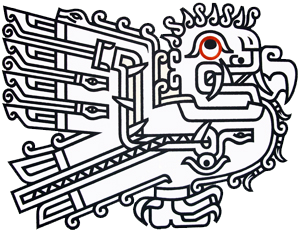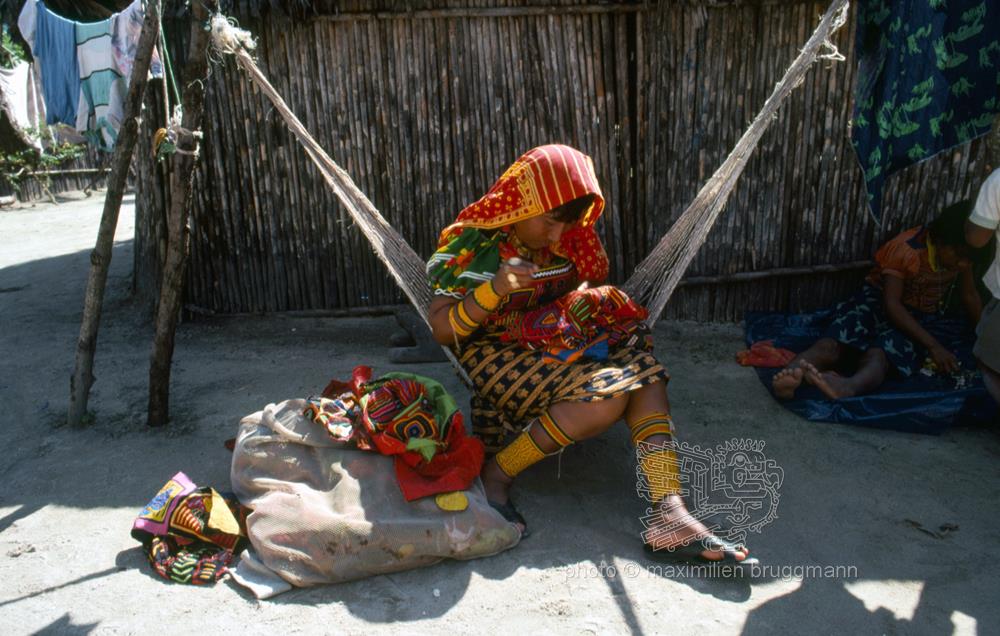Description
The Cuna woman is engaged in the manufacture of her clothing, namely the well-known cotton blouse (mola). She works under a tree or at the entrance of her home, sheltered from the sun. The Indian woman likes to cover herself with ornaments. She wears a small golden metal ring on her nose. On her arms and ankles she wears tightly fitted bracelets made of coral beads. While her husband fishes, hunts or works in one of the crop fields he owns on the mainland, the Cuna woman stays at home and performs a multitude of domestic tasks. She plays a considerable role in the society of her clan, which has a matriarchal structure. Thus, the puberty of girls is a very important event and is the pretext for a lively celebration in which all members of the community participate; in contrast, the puberty of boys goes unnoticed. It is also the case that the young husband will live in his wife's home, having to assist his parents-in-law in all circumstances. - 1977
Description
The Cuna woman is engaged in the manufacture of her clothing, namely the well-known cotton blouse (mola). She works under a tree or at the entrance of her home, sheltered from the sun. The Indian woman likes to cover herself with ornaments. She wears a small golden metal ring on her nose. On her arms and ankles she wears tightly fitted bracelets made of coral beads. While her husband fishes, hunts or works in one of the crop fields he owns on the mainland, the Cuna woman stays at home and performs a multitude of domestic tasks. She plays a considerable role in the society of her clan, which has a matriarchal structure. Thus, the puberty of girls is a very important event and is the pretext for a lively celebration in which all members of the community participate; in contrast, the puberty of boys goes unnoticed. It is also the case that the young husband will live in his wife's home, having to assist his parents-in-law in all circumstances. - 1977





